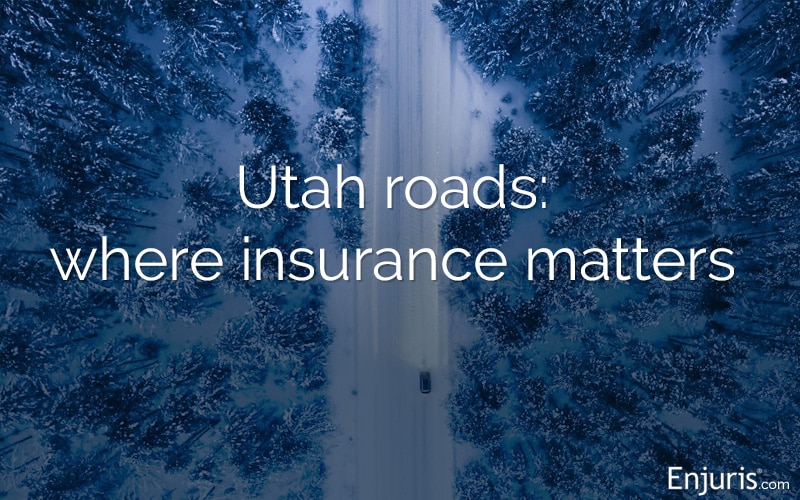
From crashes to claims, navigate Utah’s no-fault insurance system
Utah's no-fault insurance system can be a maze for drivers involved in an accident. This guide explores your rights, the role of Personal Injury Protection, and the implications of driving uninsured or underinsured in the state.
On a crisp winter morning, you're on the road with your family, heading to the snow-covered mountains for some skiing. Out of nowhere, a distracted driver swerves into your lane, leading to a crash. Your vehicle suffers damage and, worse, there are injuries. To add to the distress, you discover the errant driver is uninsured.
So, where do you go from here?
Utah is a no-fault insurance state
Unlike most states, Utah is a “no-fault” insurance state. This means that, after most car accidents, injured drivers and passengers seek compensation from their own insurance policies, regardless of who was at fault.
This system is intended to lower the cost of auto insurance and provide quick compensation following an accident.
Learn more about car accidents in Utah, including common causes and how to recover damages.
Personal Injury Protection requirement
As a no-fault insurance state, Utah requires all drivers to carry at least $3,000 in Personal Injury Protection (PIP). PIP covers medical expenses, lost income, and other costs related to the accident, up to the policy limits, without regard to fault.
Liability insurance in Utah
Though Utah operates under a no-fault system, drivers are still required to carry liability insurance. This protects drivers if they cause significant injuries or property damage to others.
The minimum coverage amounts required in Utah are as follows:
- $25,000 for bodily injury per person
- $65,000 total per accident
- $15,000 for property damage
Learn more about liability insurance, including what it does and does not cover.
Penalties for driving without insurance in Utah
If a vehicle owner isn’t adequately insured, the Utah Department of Motor Vehicles has the authority to halt the registration of the uninsured vehicle.
Not having insurance qualifies as a Class B misdemeanor. The penalty for this offense is no less than $400 for the first instance, and $1,000 for any additional offenses within a three-year period following an initial conviction or bail forfeiture. Additionally, the uninsured driver’s license may be suspended.
The most severe consequence of driving without insurance, however, is that uninsured drivers who cause an accident are personally liable for all of the damages that exceed the innocent driver’s PIP coverage.
Stepping outside the no-fault system
Imagine you're involved in an accident in Salt Lake City where another driver ran a red light, crashing into your car. While you've sustained injuries, you initially rely on your PIP coverage for the medical bills. But as weeks progress, you realize the costs of treatments and therapies are rapidly exceeding your PIP limits.
In situations like these, where injuries are obviously severe or where medical expenses outpace the PIP coverage, victims can step outside the no-fault system. By doing so, they can make a claim against the at-fault driver. This allows for the possibility of full compensation, including compensation for pain and suffering, which isn’t typically covered by PIP alone.
Underinsured and uninsured motorist coverage
While it’s illegal to drive without auto insurance in Utah, not everyone follows the rules. For this reason, Utah allows (but doesn’t mandate) drivers to purchase uninsured and underinsured motorist coverage. This coverage protects you if you’re hit by a driver who doesn’t have insurance or doesn’t have enough insurance to cover your damages.
According to the Insurance Information Institute (III), 6.5 percent of drivers in Utah are uninsured, making it one of the states with the lowest percentage of uninsured drivers.
How is insurance handled when a friend borrows your vehicle?
Imagine for a moment that you lend your car to a close friend for the weekend. While on a run to the grocery store, they get into a fender bender. Panic sets in as you both wonder: Whose insurance will cover the damages?
In Utah, as in many states, auto insurance typically follows the car rather than the driver. This means if a friend or family member borrows your vehicle with your permission and gets into an accident, it's usually your insurance that will be the primary source of coverage for any damages or injuries.
However, there are nuances to consider. If the damages exceed your policy's limits, the borrower's insurance might act as a secondary coverage to cover the excess amounts. Furthermore, if the borrowing individual did not have your permission to use the vehicle, their insurance could become the primary coverage.
Utah’s no-fault insurance system can be complicated, especially if you’re dealing with the aftermath of an accident. An experienced Utah personal injury attorney can help you understand your rights, explore your options, and ensure you get the compensation you deserve. Whether it’s negotiation with insurance companies or advocating for you in court, a lawyer’s knowledge and skill can be invaluable. Fortunately, initial consultations are typically free.
See our guide Choosing a personal injury attorney.

